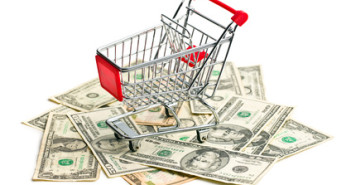The Fed statement was relatively upbeat and optimistic about the US economy, blaming the Q1 weakness on the weather and leaving the hands of the Fed fully free to act – there is no more forward guidance of any sort.
Looking a bit closer into the statement, we can find a hint about why the Fed leans to the hawkish side, and perhaps a hint about the upcoming economic release:
In the first paragraph, we find this quote regarding consumption.
Growth in household spending declined; households’ real incomes rose strongly, partly reflecting earlier declines in energy prices, and consumer sentiment remains high
So what do we have here:
- A slower rise in spending – consumers have more money.
- A strong rise in real incomes – consumers have more money.
- Consumer confidence remains high – consumers are confident.
1) If consumers have more money and they are more confident, are they about to go shopping?
The US economy is consumer based – Americans buy, buy and buy. If the largest part of the economy is about to pick up, there certainly is room for optimism.
Tomorrow we get the Fed’s closely watched figure the Employment Cost Index: This is a quarterly measure, making it even more important. Also here, the Fed looks at this number with at least the same importance as the average hourly earnings when it comes to determine wage growth.
We can assume that the Fed already has this data on its desk. So, there is a second question to ask:
2) Does the sentence quoted above hint about a stronger rise in wage growth?
These things are of course correlated: more real income coming from higher wages and lower energy prices leaving even more money in consumers’ pockets, we could see more consumption and thus a big boost to the economy.
So far, retail sales figures fell short of expectations. They better be better for the Fed to hike in 2015.
More: EUR/USD broke out of wide range – is it the real thing?
